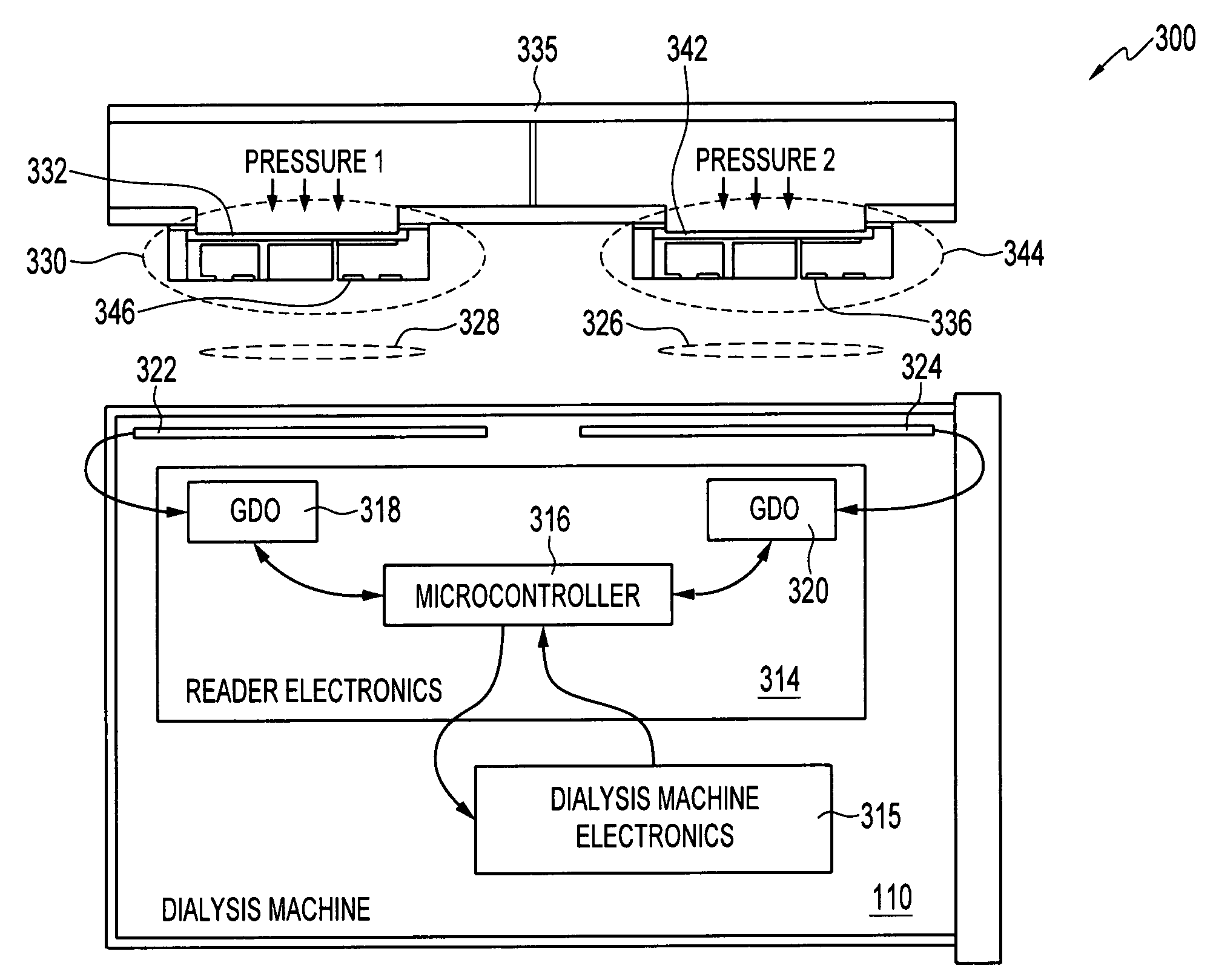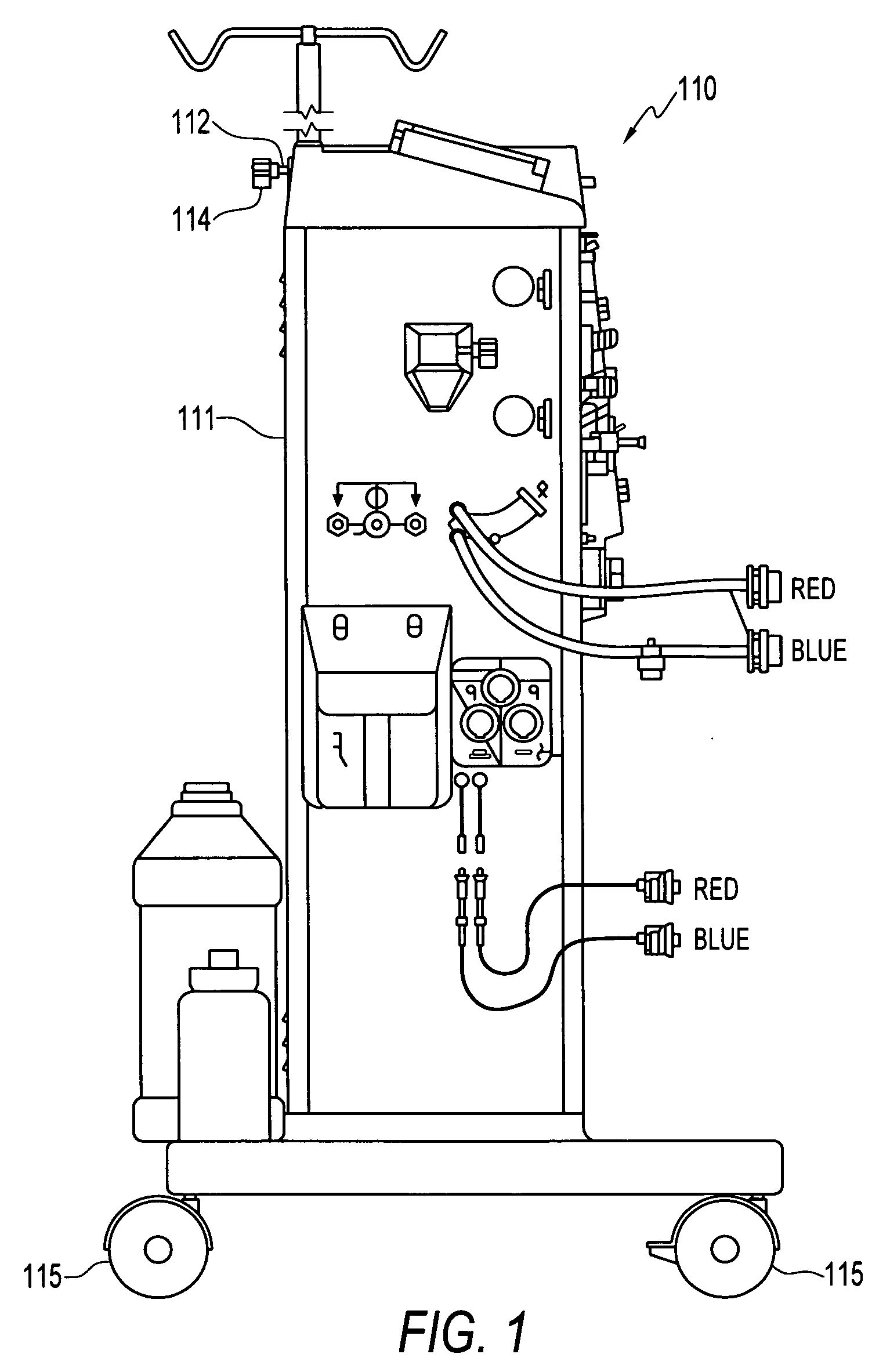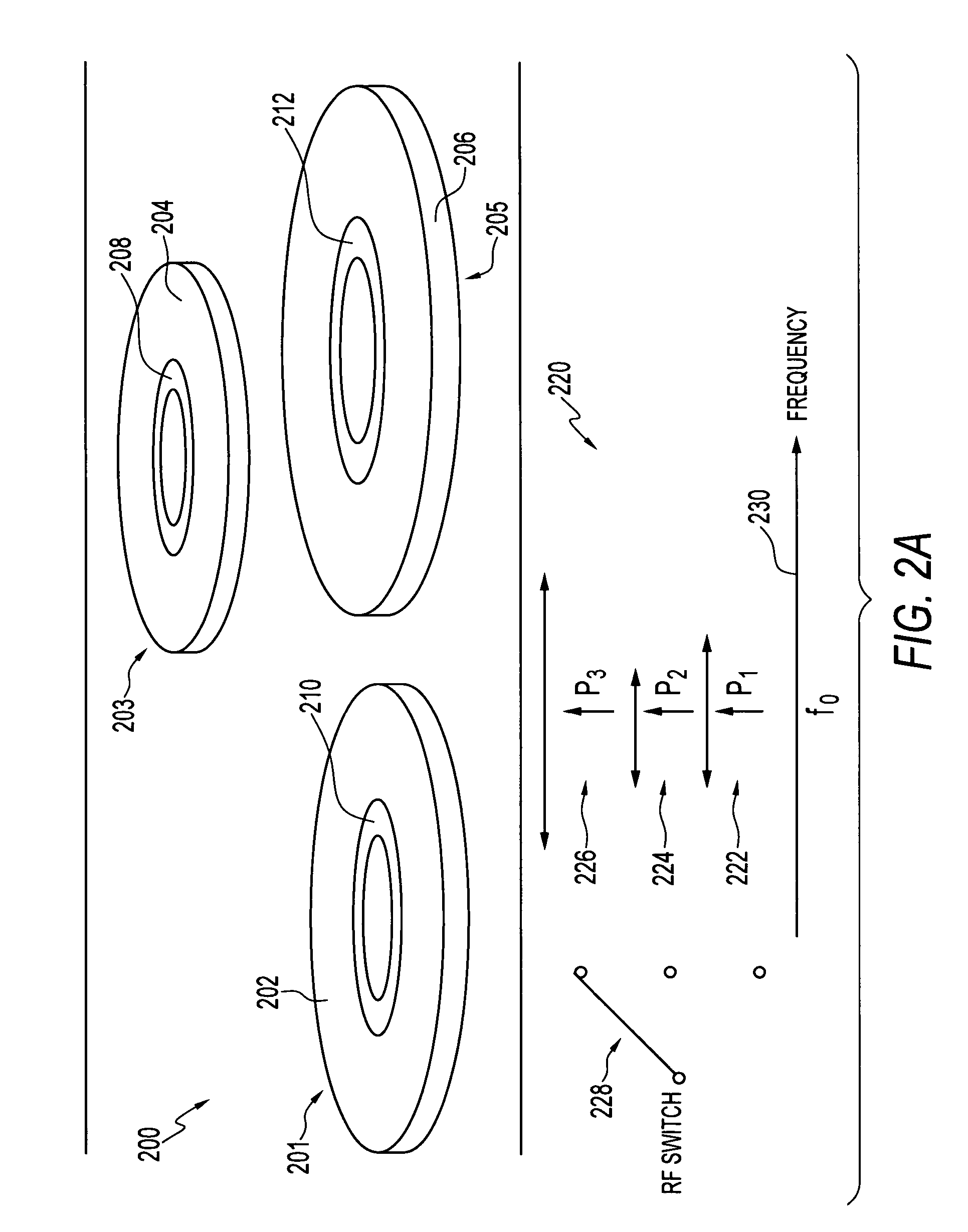Multiple wireless sensors for dialysis application
a wireless sensor and dialysis technology, applied in the field of sensing devices and methods, can solve the problems of inability to use mechanical fluid removal in the icu, emergency rooms and general floors of the hospital, and inability to achieve smooth blood path, so as to maximize the amplitude of spurs for detection.
- Summary
- Abstract
- Description
- Claims
- Application Information
AI Technical Summary
Benefits of technology
Problems solved by technology
Method used
Image
Examples
first embodiment
[0040]FIG. 2(b) illustrates a graph 231 depicting how a system of sensors (e.g., see sensors 402, 404, 406 in FIGS. 5-6 and sensors 330, 344 in FIG. 3) can operate in different resonant frequency bands, in accordance with an alternative version of the Note that in FIGS. 2(a)-2(b) identical or similar elements or components are generally indicated by identical reference numerals. Thus, zero pressure frequencies, f0, f02, and f03 are shown along the x-ordinate frequency range 230 in FIG. 2(b).
[0041]FIG. 2(b) indicates that multiple LC tank sensors can operate in different resonant frequency bands to avoid interference between different sensor and antenna signals. Single or multiple interrogation electronics, such as, for example, Grid Dip Oscillator (GDO) circuits, can be utilized depending on the available dynamic range of the GDO circuit. In other words, GDO circuits can be utilized if the frequency range over which the oscillator circuit operates can sustain oscillations. In eithe...
second embodiment
[0059] In general, size limitations for sensors utilized in hemodialysis applications are problematic. It would be beneficial to design a multiple-sensor system with the lowest cost, small size and fewest parts. FIGS. 1-6 represent one possible embodiment. A second embodiment involves the use of wireless LC tank multiple sensors in the context of a sensor system in which the sensors share a single antenna. Multiple capacitors can be linked with a single planar coil, such that each associated variable capacitor results in a signature frequency (i.e., spurs). Multiple characteristic resonant frequencies can be detected in such a system through prudent design.
[0060]FIG. 7 illustrates a graph 700 depicting a variety of frequencies in the context of a sensor system for dialysis applications, in accordance with a second embodiment. In graph 700, f0 represents the fundamental frequency of the sensor system that will not be detected, while f1, f2, and f3 are spurs related to each sensor in,...
PUM
 Login to View More
Login to View More Abstract
Description
Claims
Application Information
 Login to View More
Login to View More - R&D
- Intellectual Property
- Life Sciences
- Materials
- Tech Scout
- Unparalleled Data Quality
- Higher Quality Content
- 60% Fewer Hallucinations
Browse by: Latest US Patents, China's latest patents, Technical Efficacy Thesaurus, Application Domain, Technology Topic, Popular Technical Reports.
© 2025 PatSnap. All rights reserved.Legal|Privacy policy|Modern Slavery Act Transparency Statement|Sitemap|About US| Contact US: help@patsnap.com



